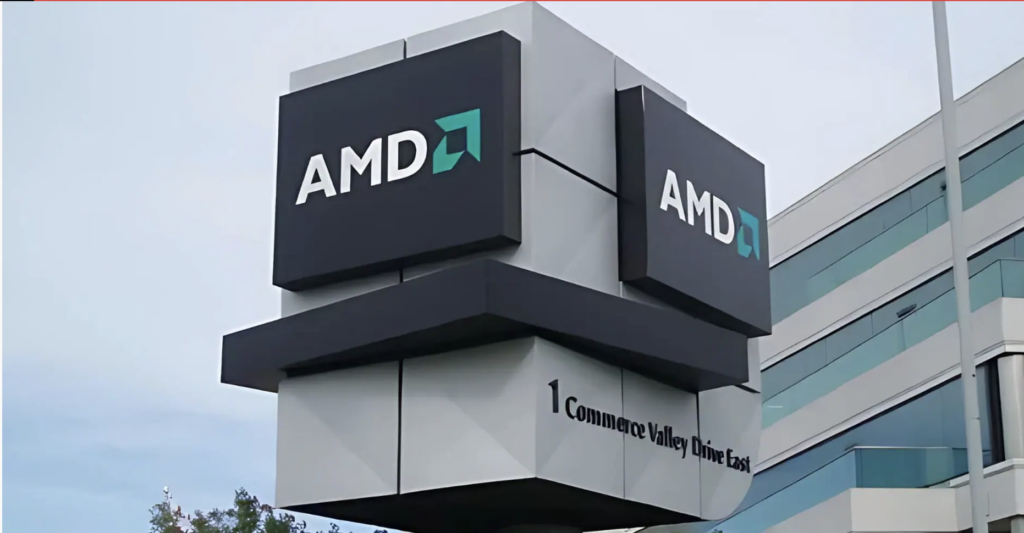In a move signaling a major leap forward for artificial intelligence, AMD (NASDAQ: AMD) and the French Commissariat à l’énergie atomique et aux énergies alternatives (CEA) have announced a strategic collaboration to develop the advanced technologies and system architectures that will define the next generation of AI computing.

This partnership unites the strengths of two powerhouses in technology and research, aiming to push the boundaries of energy-efficient systems capable of handling the world’s most demanding AI workloads, from revolutionizing energy production to accelerating medical breakthroughs.
The collaboration will be a structured, focused effort on technological advancements for next-generation AI compute infrastructure. Beyond the immediate research goals, the chip maker and CEA are planning a landmark symposium in 2025 dedicated to the future of AI compute.
This event will bring together key players from across Europe and the globe, including technology providers, startups, supercomputing centers, universities, and policymakers, fostering a collaborative ecosystem to accelerate the development and adoption of cutting-edge and emerging AI computing technologies.
In December last year, the chip maker has also rolled out the latest iteration of its software suite, AMD Software: Adrenalin Edition 24.12.1 — a groundbreaking move that promises to elevate gaming experiences and developer capabilities.
AMD: Pushing the boundaries of what’s possible

Ralph Wittig, Corporate Fellow and head of research at AMD
“AI computing is a driving force behind innovation across every industry, and international collaboration is absolutely essential to pushing the boundaries of what’s achievable,” said Ralph Wittig, Corporate Fellow and head of research at AMD. “Our partnership with CEA and leading French engineers provides a unique opportunity to bring cutting-edge AI research closer to real-world applications.”
“By advancing system architectures tailored to the intense demands of tomorrow’s AI workloads, we’re not only driving technological progress but also strengthening research and development ties between the U.S. and France,” he added.
The CEA, a leading research organization in France, is equally enthusiastic about the collaboration.
“CEA is deeply committed to driving innovation in AI computing by developing next-generation technologies that pave the way for disruptive architectures, balancing performance with crucial energy efficiency,” stated Julie Galland, Director of the Technological Research division at CEA.
“Our collaboration with AMD represents a significant step towards fostering international cooperation in high-performance computing. By combining CEA’s research leadership with the chip maker’s cutting-edge technology, we aim to develop breakthrough solutions that will shape the future of AI computing not just in Europe, but also globally,” she added.
Fostering international partnerships

This initiative underscores the chip maker’s commitment to fostering international partnerships that accelerate AI innovation, making AI more inclusive, sustainable, and accessible. It also highlights the growing importance of transatlantic cooperation in the rapidly evolving field of artificial intelligence, strengthening the vital link between U.S. and European research institutions.
The implications of this collaboration are far-reaching. By focusing on energy efficiency, the chip maker and CEA are addressing a critical challenge in AI development.
As AI models grow in complexity and data demands increase exponentially, the energy consumption of AI computing becomes a significant concern. The partnership’s focus on developing energy-efficient systems will be crucial for ensuring the long-term sustainability of AI advancements.
Furthermore, the joint symposium planned for 2025 promises to be a pivotal event in the AI landscape. By bringing together a diverse group of stakeholders, the symposium will facilitate the exchange of ideas, foster collaboration, and accelerate the translation of research into practical applications. This collaborative approach is essential for navigating the complex challenges and opportunities presented by the rapid evolution of AI.
The AMD-CEA partnership is more than just a collaboration between two organizations; it represents a commitment to shaping the future of AI computing. By combining their expertise and resources, AMD and CEA are poised to make significant contributions to the field, pushing the boundaries of what’s possible and unlocking the transformative potential of AI for the benefit of society.
This transatlantic alliance is a testament to the power of international collaboration in driving technological innovation and addressing the complex challenges of the 21st century.
About AMD

For more than 50 years, AMD has propelled innovation in high-performance computing, graphics, and visualization technologies.
Billions of people, leading Fortune 500 companies, and cutting-edge scientific research institutions around the world rely on AMD technology daily to improve how they live, work, and play.
AMD employees are focused on building leadership high-performance and adaptive products that push the boundaries of what is possible. For more information about how AMD is enabling today and inspiring tomorrow, visit the AMD (NASDAQ: AMD) website, blog, LinkedIn, and X pages.
AMD, the AMD Arrow logo, and combinations thereof, are trademarks of Advanced Micro Devices, Inc. Other names are for informational purposes only and may be trademarks of their respective owners.








